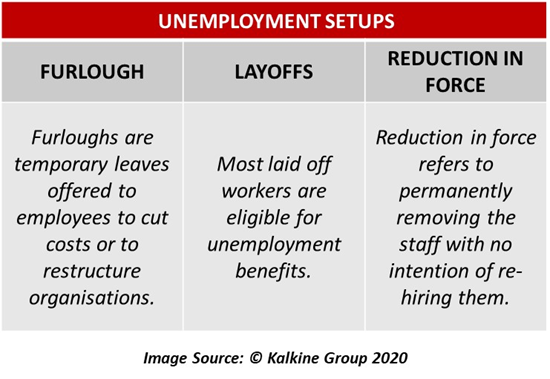What is meant by furlough?
Furlough refers to a temporary leave of employees under special circumstances. Companies might feel compelled to put their employees on a furlough when they suspect a downfall in the economy. Being put on a furlough means that the employees are still employed; however, they have been put on a leave of absence.
Furlough is a cost cutting technique followed by companies during tough economic conditions. It is also used by companies when they plan on reorganising the workforce. They are also commonly seen in military when soldiers are to be posted on duty. However, furloughs and layoffs do not mean the same thing as furloughs are not necessarily cutting off workforce.
Why do companies need furloughs?
Furloughs are adopted by companies when they are short of cash to pay to their employees. Furloughs can also be implemented when an organisation does not have enough work to utilise the workforce completely.
It is an alternative to firing employees and can help on cost cutting without the need for a future rehiring process.
How is a furlough implemented?
Employees can be put off work completely or they can be given a less packed schedule for the week and given a furlough on the days they do not come to work.
Reducing the work schedule is a good option when there are not enough work assignments, and the company is going through a restructuring.
Companies may also ask employees to take a certain number of unpaid hours off work in week or they may ask their employees to take a certain number of unpaid days throughout the year or even continuous months off in a year. This depends on the type of furloughing agreement that exists between the employer and the workers. This type of agreement is called a flexible furlough agreement.
The furloughed staff may do volunteer work at other organisations and can keep on training to improve their skills to stay up to date. However, furloughed staff cannot be employed by their employer or any other organisation linked to their employer for other tasks during the furloughed period.
How is furlough different from layoffs and reduction in force?
Furloughs allow employees to anticipate a rehiring in the future, unlike layoffs. Layoffs occur when firms are sure that they would not be able to hire the workers again. Most laid off workers are entitled to unemployment benefits.
Layoffs might also be temporary, like in the case of the hospitality industry. Most workers in the hospitality industry, know that under the circumstances of a pandemic, work is limited. Therefore, a layoff because of a pandemic might be interpreted as a temporary layoff. However, it is also possible that the layoff may not be temporary.
Even when employees are laid off, some employers might offer continued benefits so that they remain available for a future rehiring. Layoffs are different from “reduction in force”, which refers to laying off workers without the intention of rehiring them. Reduction in force refers to permanently removing the staff with no intention of re-hiring them.
Thus, furlough, layoffs and reduction in force are all different from each other.

How is furlough different between exempt and non-exempt employees?
Non-exempt employees are qualified for overtime pay, and thus, it easier to adjust their pay in the case of furlough. Thus, they can be paid according to the hours they work. However, in the case of exempt employees, the employers need to be cautious.
Exempt employees are paid fixed salaries and are not eligible for overtime. Thus, furloughs can be tricky in case of exempt employees. In such a case furloughs can be implemented over an entire week rather than on an hourly basis.
How long can furloughs last?
Furloughs can be implemented over a long period or a short period. Some furloughs can come in the form of mandatory unpaid leaves. This means that workers can be charged for leaves which were otherwise paid leaves for them.
Companies may also opt for furloughs when they anticipate a long period of shutdown.
What are some examples of furlough schemes?
Furlough schemes were implemented in the UK as a part of remedial measure under the Coronavirus Job Retention Scheme. Under this scheme, employees are offered furlough wages with the government paying 80% of those wages. The employer covers only the pension and national insurance contributions.
Full-time and part-time employees can both be furloughed. Apart from furlough, firms have also been offered other fiscal benefits by the UK government to tackle the aftereffects of the pandemic.
 CA
CA  AU
AU UK
UK US
US NZ
NZ Please wait processing your request...
Please wait processing your request...